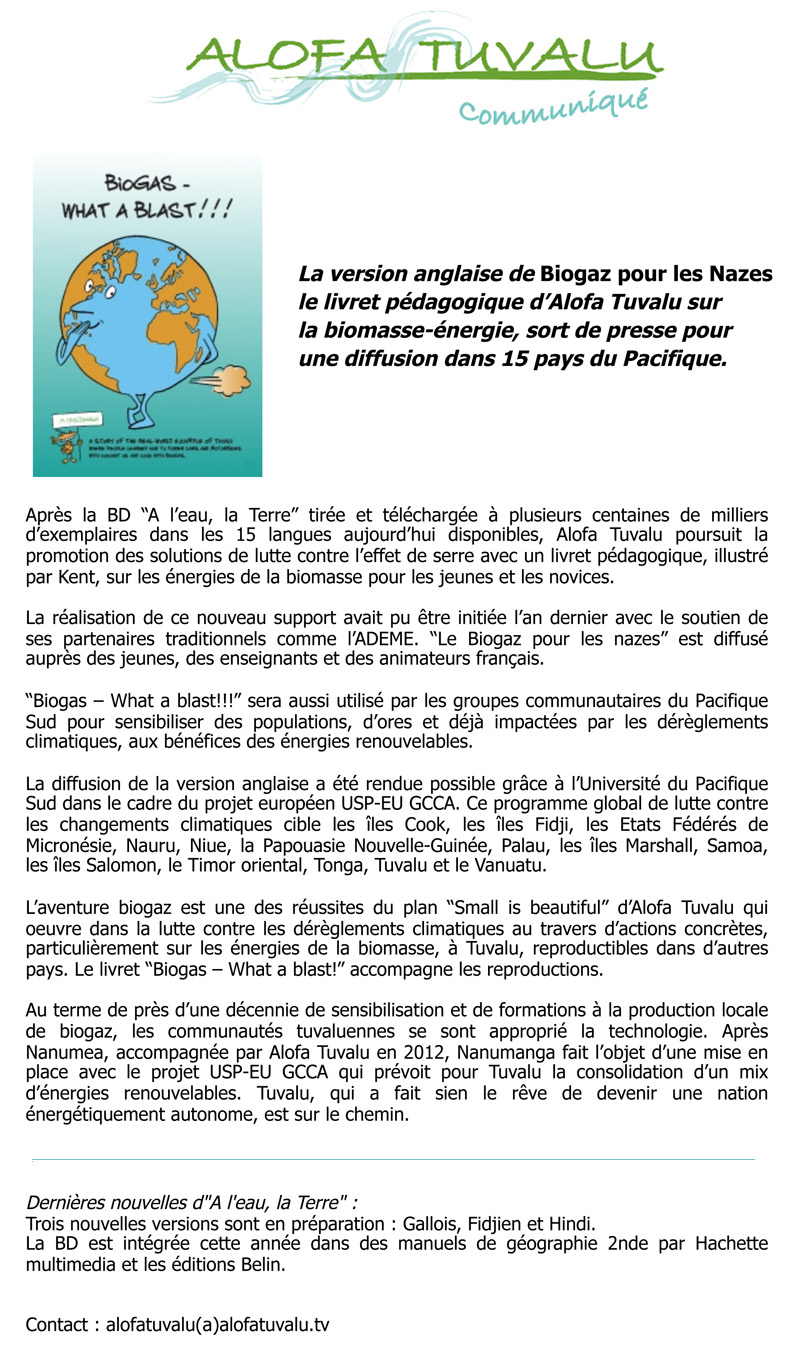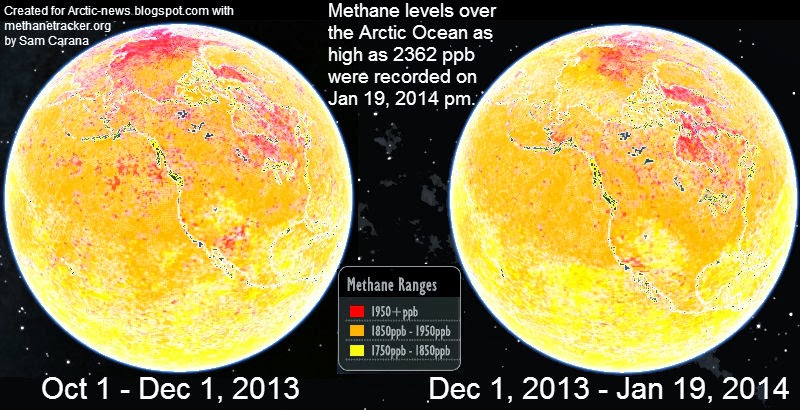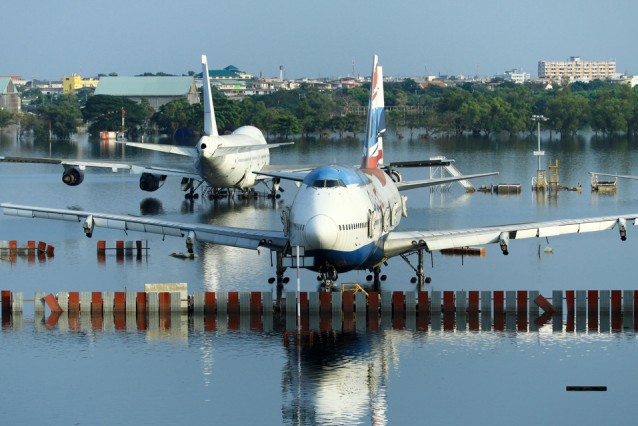Below is what Chris wrote on our behalf and we would feel honored to have this read to his family and friend.
Alofa atu
Gilliane
"It is with great sadness that the membership of Alofa Tuvalu has learned of the passing of the Right Honorable Tauripi Lauti. His accomplishments as a politician and as one of the founding fathers of independent Tuvalu are well known, but his qualities as a man were more remarkable still. His strength, humility, good natured wisdom and sense of justice informed his actions as a human, as a family man, as a friend and as a leader. With his easy, common sensical and open-hearted manner, he was, it seems to us, a model of what a responsible citizen could and should be... a rare thing indeed in this confused and confusing world. Someone to look up to and to feel proud of...and to feel privileged to be able to call a friend. We send our love and deepest sympathies to his family, his larger circle of friends and to the nation of Tuvalu. Taoripi will surely be very missed by all who knew him. May he rest in peace... and may his spirit soar as an enduring example for all of us."




Gilliane Talofa
Thank you for the message as he contributed in the documentary Trouble in Paradise... All messages would be read at the Funafuti Falekaupule by the family member and those from abroad from Head of States would be read by the Officer from Foreign Affairs...The State Funeral would be held on Wed the 28th May at 2-3.30 pm and would be buried at the ground of his home at 4 pm... Alot of commotion today in preparation even the govt officers doing all of the protocols...
Thanks for remembering us in our time of mourning for one of the prompt figure in our country...
Alofa lasi atu kia Chris and Fanny...
Teu
"Our staff n students love the book!! Sikeli left today (flight delay!!0 to take books to Nanamaga "
May 18, 2014, John, an Alofa Tuvalu active member in Australia and Alpha Pacific Navigation Ltd manager, wrote:
Congratulations for Biogas What a Blast!!!. It is a terrific booklet and is sure to be a great success. There is a lot of detail in it, all told in a such an easy to read and happy way. I particularly laughed at the final graphic WC Bank; very clever! With a little luck it will become as popular as the comic :)
May 14, 2014, on twitter Gill Hickman, Head of Biology and Sustainability Coordinator at Ringwood School, wrote:
@Fun_AlofaTuvalu @UPMagazine_fr Fier que les @GCampaigners Millie Sam Katy Sam Becca du Collde #Ringwood ont pu participer a cette grande BD.

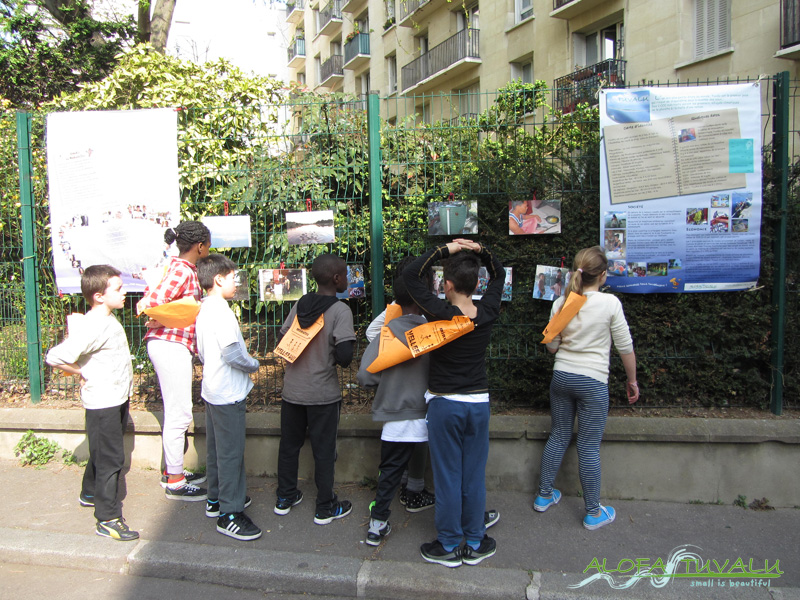
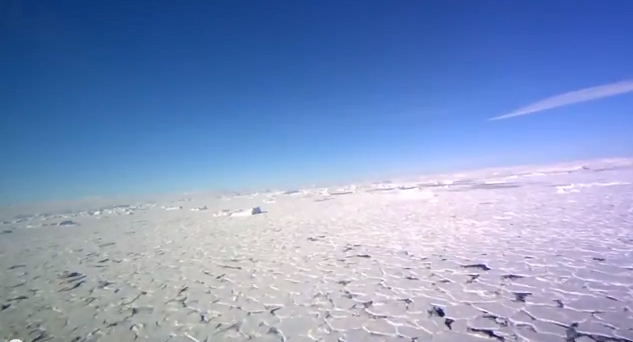
"The length of the melt season for Arctic sea ice is growing by several days each decade, and an earlier start to the melt season is allowing the Arctic Ocean to absorb enough additional solar radiation in some places to melt as much as four feet of the Arctic ice cap's thickness, according to a new study by National Snow and Ice Data Center (NSIDC) and NASA researchers."
https://www.youtube.com/watch?v=7IQBn-Sg-gc
Remember 2009? : www.youtube.com/watch?v=uHxnJyYtO18
Cat
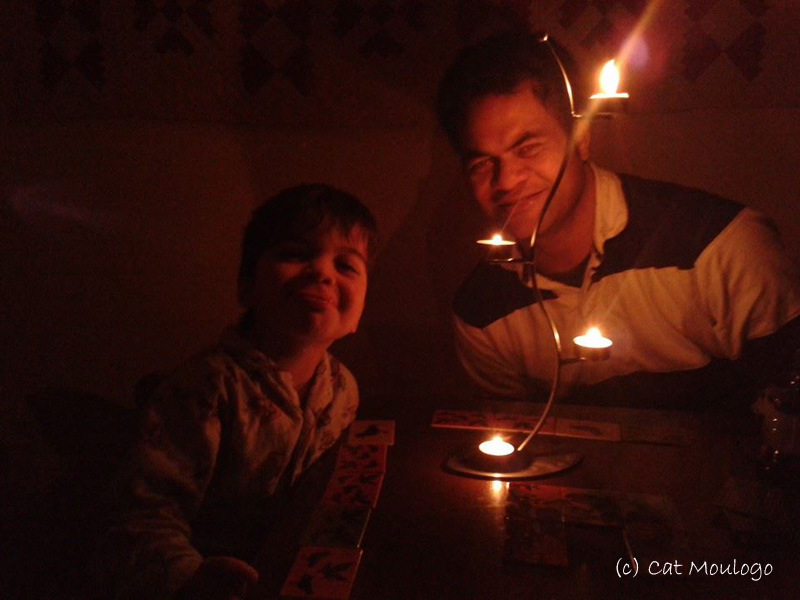

ILLUSTRATIONS SONORES "Cest le titre de lexposition qui aura lieu aux 3 Baudets du 6 mars au 10 avril prochains. Pourquoi ce titre ? Parce que ma vie durant jai dessiné la musique. Pochettes, affiches, illustrations diverses, travail de commande ou crobards dilettantes, lexposition en réunit un bon nombre, des 70s à aujourdhui." Kent
6 mars 2014 : vernissage de l'expo
10 mars 2014 : concert
10 avril 2014 : concert
Plus d'infos sur le site des trois baudets
Et retrouvez Kent sur Facebook
Pourtant le lien avec les changements climatiques n'est (presque) jamais fait par nos dirigeants...

Retrouvez le Réseau Action Climat sur Facebook

(from left to right: Leota, Gilliane, Iefata and wife, Sailoto, Fanny, Sikeli)

Credit: AP Images
ACCESS THE ARTICLE
On February 5, our friend Gill, teacher at Ringwood School in the Uk (Hampshire) wrote :
"Today, as has occurred throughout December and January half of England is flooded. We understand Tuvalus plight. All the best"
Mid February, no improvement !...
I dont think Ive ever seen anything quite like last night.
The call to organize rallies against Keystone XL went out on Friday afternoon as the State Department released their report on the pipeline. By Monday morning, over 250 actions were planned and thousands of people were ready to take to the streets in the cold, rain and snow.
In New York, people gathered after a heavy snow and spelled out a giant #noKXL message in lights. In DC, a crowd stood outside the White House and asked a simple question to President Obama: "Will you be a climate champion or the pipeline president? In Nebraska, folks gathered in the solar-powered barn that stands in the path of the pipeline were it to move forward.
I could say more, but in this case it really is true that the pictures are worth a thousand words. Could you share this image with photos from last night on Facebook to help show the world that this movement is mobilized like never before?
Click here to share this image:

(Photo credits: Oakland - Brooke Anderson, Atkinson - Diane Steskal, NYC - Terry Allen)
If thats what we can do in one weekend, imagine what were capable of in the weeks and months to come, as President Obama makes his final decision about the pipeline.
Tonight well be bringing together a video chat to talk about some ideas for what comes next. Now is the time to start making plans the video chat will start at 9 PM Eastern/ 6 Pacific, and well have a message from 350.org co-founder Bill McKibben, hear from Idle No More organizer Clayton Thomas-Muller, and lay out some ideas for a full court-press to stop the pipeline.
Click here to get a reminder email for the video chat: act.350.org/sign/feis-video-chat/
President Obama has the evidence he needs to reject the pipeline the question is whether he wants to be remembered as a climate champion or the pipeline president.
That means that Washington bureaucrats wont decide this fight we will. If we can make enough noise in enough creative, unavoidable ways, we can drown out the voice of big oil.
This wont be our last fight there are still many tar sands projects to stop, and a whole fossil fuel economy to turn around but it is a crucial one, and one that Im so, so excited to continue alongside you.
Lets do this.
Duncan
350.org is building a global movement to solve the climate crisis. Connect with us on Facebook and Twitter, and sign up for email alerts. You can help power our work by making a donation.
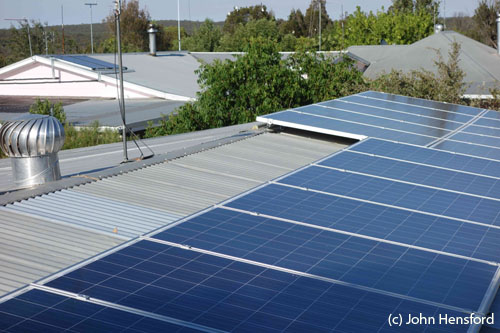
![]() John said:
John said:
I cant remember whether I mentioned or not that I had installed a grid-connected solar power system. The opportunity came up unexpectedly to make an arrangement with a small power company to sell them my excess power at 30 cents/kWh, compared to 34.2 cents buying from them. I installed a 5kW system (20 panels). I would like to have gone bigger but that was all that the power company permitted (they want one to draw some power from them).
They will supposedly install a new meter soon that shows power production and power consumption and offsets one against the other. For time being I still have my old meter; it spins backwards when the sun is shining. Thrilling to see that! Yesterday my net consumption was minus 8kWh. My running average daily consumption for two months was 0.6kWh but having family here at Xmas and using air-conditioning on one rather hot night, and doing lots of cooking, suddenly pushed up the daily average to 2.3kWh. Nevertheless, that is far lower than before. I calculate that I have saved $925 in the three months since installation. Payback would take about four years on present figures but will be longer taking into account the lower angles of sunlight and shorter days in Winter.
We made the decision to install the panels flat on the roof of our shed which is only sloped at 20 degrees to horizontal. It would be better to have them at about 35 degrees but that would have required a more expensive supporting framework. The increased efficiency would probably not have justified the extra cost. Anyway, it was not an option as the installers didnt have the materials for such a frame. More importantly, my wife said I absolutely dont want ugly panels sticking up in the air. So that was that!

I also installed a solar hot water system. After looking at the various options, including heat pump and evacuated tube systems, I went for a conventional solar panel system but with the tank at ground level (connected to the panels through a heat exchanger).
 The tank has a booster element connected to our existing off-peak power supply. In three months weve used 43kWh of off-peak power at 20 cents/kWh but most of that was consumed on Xmas and Boxing Days when the house was full of kids showering. When just my wife and I are at home the off-peak meter hardly changes from one week to the next. The payback time will be at least nine years, so its not really an economic proposition in our situation where off-peak power is available but, what the heck, I did it anyway!
The tank has a booster element connected to our existing off-peak power supply. In three months weve used 43kWh of off-peak power at 20 cents/kWh but most of that was consumed on Xmas and Boxing Days when the house was full of kids showering. When just my wife and I are at home the off-peak meter hardly changes from one week to the next. The payback time will be at least nine years, so its not really an economic proposition in our situation where off-peak power is available but, what the heck, I did it anyway!
I have in mind to install more solar panels. I wont be able to connect them to grid because of the power companys policies but I will be able to use the power in other ways to reduce overall consumption. I dont want to use batteries because standalone solar systems are so expensive. What I have in mind is to use direct loading. Our waterbed is a significant consumer of power (I have been measuring it) even though I recently installed a new, supposedly more efficient heater. The consumption isnt really a concern at present because I have at time clock on the heater circuit that only allows power during full daylight hours. Nevertheless, if I can connect panels directly to the heater it will allow more power to go to the grid during the day, bringing our production close to equalling what we draw from the grid at night.

Matching the panels and the load is not straightforward. I want to understand it all better so I have decided to take advantage of a living with solar course offered by the Rainbow Power Company (www.rpc.com.au) in a few weeks. That company has its business at Nimbin in northern NSW, an area that has a plethora of alternative living people (hippies as they used to be called when that term was in vogue). It should be an interesting course.
![]() Alofa Tuvalu counterpart in the US and an architect specialized in environment, Chris said: So great that you have embraced solar at home. Yeah...with all its own ins and outs, it can be a pain at first to adjust...but longer term, it's the right, smart move...and it sounds like you are rapidly becoming an expert, as you always do with things that capture your attention. Funny about the longer payback on the hot water system...it's just the opposite here in California. Payback is MUCH quicker for hot water...especially with new state subsidy. But there are so many variables from place to place... In any case...way to go! Will be interested in hearing of your continuing solar adventures. When are you converting to an electric car ??? (sorta just joking re that one... your distances are likely too great.... but maybe an electric scooter?)
Alofa Tuvalu counterpart in the US and an architect specialized in environment, Chris said: So great that you have embraced solar at home. Yeah...with all its own ins and outs, it can be a pain at first to adjust...but longer term, it's the right, smart move...and it sounds like you are rapidly becoming an expert, as you always do with things that capture your attention. Funny about the longer payback on the hot water system...it's just the opposite here in California. Payback is MUCH quicker for hot water...especially with new state subsidy. But there are so many variables from place to place... In any case...way to go! Will be interested in hearing of your continuing solar adventures. When are you converting to an electric car ??? (sorta just joking re that one... your distances are likely too great.... but maybe an electric scooter?)
![]() John said: I must admit I didnt directly take into account the subsidies available for solar systems. They were taken off the prices that I had to pay for the two systems. My payback calculations were on net price basis as thats what mattered most to me. Still, I think that is a correct way of calculating, or have I missed something?
John said: I must admit I didnt directly take into account the subsidies available for solar systems. They were taken off the prices that I had to pay for the two systems. My payback calculations were on net price basis as thats what mattered most to me. Still, I think that is a correct way of calculating, or have I missed something?
With solar hot water the calculation would no doubt be very different if there were more people living in my house. We could have installed a more modest system that would have met our requirements 95% of the time. That would have paid back much more quickly I suppose.
Offpeak power here is about 60% the cost of peak power so is quite an economical way of heating water. My average cost was about $1.49 per day. Now its virtually nothing, but it takes a long time to recoup capital cost at $1.49 per day!
Something I am watching carefully is use of air-conditioning. My Xmas scare wasnt so bad as I thought. My wife has just told me that the grandkids switched on a heat lamp in the main bathroom and left it on all night. They flipped the wrong switch - heap lamp instead of light. Its a good thing I didnt find out at the time; I might have been a little upset! Anyway, it was good in the sense that it has made me very wary of using air-conditioning. As you know, we ceased using any air-conditioning in Tuvalu last year, which made a huge reduction in consumption. Here in southern Australia theres not the same need for air-conditioning anyway, and in addition our houses are much better insulated that Tuvaluan houses. Admittedly it is Summer now and if we get the very high temperatures that some parts of Australia are experiencing I may have to concede a little cooling. However, yesterday it was 36.5C here and I didnt feel the need for aircon. Perhaps thats a legacy of having lived in the tropics so long! Its also a question of humidity. Its low here and feels much cooler than the average day in Tuvalu, despite being about five degrees hotter here than the average in Tuvalu.
Electric car? Huh, if I went to the local shops I would need to plug in and recharge before I could come home! Electric scooter? Possible I think, but not much fun riding one our dusty, unsealed roads around here.
![]() Chris said: If you calculated on a "net price paid", including any subsidy, then that would seem an accurate way to do it. When calculating economics of solar projects, it's important to include the value of any subsidy that is available...as it can completely affect the viability of any given project. Germany and Spain built their entire solar industries in this fashion, offering the equivalent of enormous subsidies by paying way over the market price of conventional power to solar/alt energy producers feeding power into the grid...so called "feed-in tariffs". This caused some problems later when fit's were lowered later, but the ones in early -- at both personal and commercial scale -- made out very well. And this is how Germany, with its many grey days, became the #1 installed solar power producer in the world...!!
Chris said: If you calculated on a "net price paid", including any subsidy, then that would seem an accurate way to do it. When calculating economics of solar projects, it's important to include the value of any subsidy that is available...as it can completely affect the viability of any given project. Germany and Spain built their entire solar industries in this fashion, offering the equivalent of enormous subsidies by paying way over the market price of conventional power to solar/alt energy producers feeding power into the grid...so called "feed-in tariffs". This caused some problems later when fit's were lowered later, but the ones in early -- at both personal and commercial scale -- made out very well. And this is how Germany, with its many grey days, became the #1 installed solar power producer in the world...!!
everything you describe re your house is part of what i call "the solar learning curve"...learning how to adapt one's habits to an entirely new way of energy production and management. there are just a bunch of new details to learn to maximize system efficiency. when designing a new house, for example, from the ground up, some of these have nothing at all to do with equipment but rather with actual design....the kinds of materials used, the orientation of the building, where windows are placed, where and what kind of landscaping is used to provide shade where needed, etc, etc. This latter category is known as "passive design"...all the things you can do WITHOUT active solar systems to maximize energy efficiency and living comfort. Intelligence with passive measures can radically reduce the need for the more costly active ones... Example: roof overhangs designed to utilize season sun-angles to shade windows in summer when sun is high, but to allow sun in in winter to help heat house. etc etc etc....there are hundreds of such "tricks" to work WITH nature and site specifics....
one point of interest to me: designing this way is both VERY MODERN in terms of learning how to best maximize efficiency and reduce footprint....but in many ways also ANCIENT in terms of working with nature, something which successful societies have done since time began!
re the electric car idea....sounds premature for your situation, but eventually there will be effective enough storage and longer available ranges to take advantage of all the electricity you are producing...
it all sounds like great fun for you...a kind of living experiment as you make the big transition...and, over the longer haul, save a good deal of $$ while you're at it !! all best.
Précédent Suivant


